Summer At Bow Cemetery
Click here to book THE GENTLE AUTHOR’S TOUR for Saturday

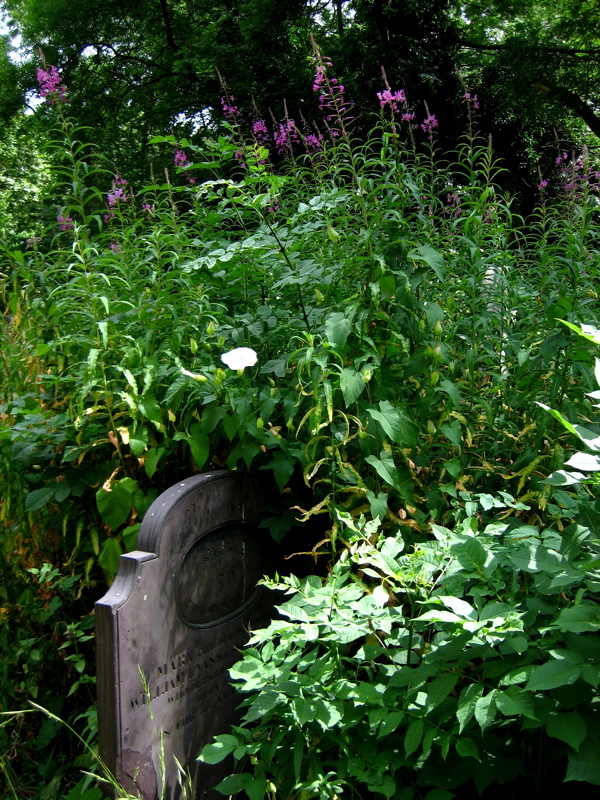
At least once each Summer, I direct my steps eastwards from Spitalfields along the Mile End Rd towards Bow Cemetery, one of the “Magnificent Seven” created by act of Parliament in 1832 as the growing population of London overcrowded the small parish churchyards. Extending to twenty-seven acres and planned on an industrial scale, “The City of London and Tower Hamlets Cemetery” as it was formally called, opened in 1841 and within the first half century alone around a quarter of a million were buried here.
Although it is the tombstones and monuments that present a striking display today, most of the occupants of this cemetery were residents of the East End whose families could not afford a funeral or a plot. They were buried in mass public graves containing as many as forty bodies of random souls interred together for eternity. By the end of the nineteenth century the site was already overgrown, though burials continued until it was closed in 1966.
Where death once held dominion, nature has reclaimed the territory and a magnificent broadleaf forest has grown, bringing luxuriant growth that is alive with wildlife. Now the tombstones and monuments stand among leaf mould in deep woods, garlanded with ivy and surrounded by wildflowers. Tombstones and undergrowth make one of the most lyrical contrasts I can think of – there is a beautiful aesthetic manifest in the grim austerity of the stones ameliorated by vigorous plant life. But more than this, to see the symbols of death physically overwhelmed by extravagant new growth touches the human spirit. It is both humbling and uplifting at the same time. It is the triumph of life. Nature has returned and brought more than sixteen species of butterflies with her.
This is the emotive spectacle that leads me here, turning right at Mile End tube station and hurrying down Southern Grove, increasing my pace with rising expectation, until I walk through the cemetery gates and I am transported into the green world that awaits. At once, I turn right into Sanctuary Wood, stepping off the track to walk into a tall stand of ivy-clad sycamores, upon a carpet of leaves that is shaded by the forest canopy more than twenty metres overhead and illuminated by narrow shafts of sunlight descending. It is sublime. Come here to see the bluebells in Spring or the foxgloves in Summer. Come at any time of the year to find yourself in another landscape. Just like the forest in Richard Jefferies’ novel “After London,” the trees have regrown to remind us what this land was once like, long ago before our predecessors ever came here.
Over time, the tombstones have weathered and worn, and some have turned green, entirely harmonious with their overgrown environment, as if they sprouted and grew like toadstools. The natural stillness of the forest possesses greater resonance between cemetery walls and the deep green shadows of the woodland seem deeper too. There was almost no-one alive to be seen on the morning of my visit, apart from two police officers on horseback passing through, keeping the peace that is as deep as the grave.
Just as time mediates grief and grants us perspective, nature also encompasses the dead, enfolding them all, as it has done here in a green forest. These are the people who made East London, who laid the roads, built the houses and created the foundations of the city we inhabit. The countless thousands who were here before us, walking the streets we know, attending the same schools, even living in some of the same houses we live in today. The majority of those people are here now in Bow Cemetery. As you walk around, names catch your eye, Cornelius aged just two years, or Eliza or Louise or Emma, or Caleb who enjoyed a happy life, all over a hundred years ago. None ever dreamed a forest would grow over their head, where people would come to walk one day to discover their stones in a woodland glade. It is a vision of paradise above, fulfilled within the confines of the cemetery itself.
As I made my progress through the forest of tombstones, I heard a mysterious noise, a click-clack echoing through the trees. Then I came upon a clearing at the very heart of the cemetery and discovered the origin of the sound. It was a solitary juggler practicing his art among the graves, in a patch of sunlight. There is no purpose to juggling than that of delight, the attunement of human reflexes to create a joyful effect. It was a startling image to discover, and seeing it here in the deep woods – where so many fellow Londoners are buried – made my heart leap. Outside on the streets, a million people were going about their business while in the vast wooded cemetery there was just me, the numberless dead and the juggler.
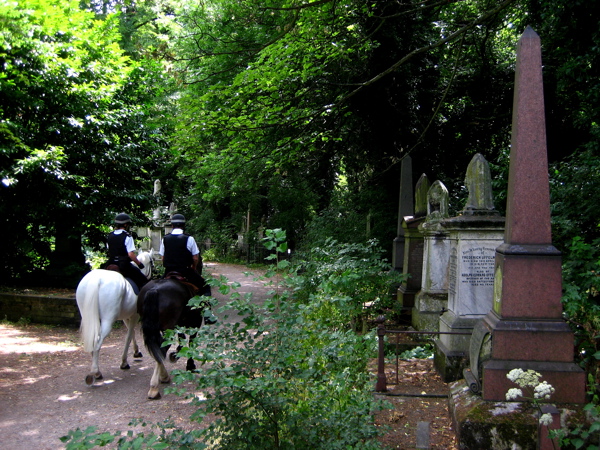

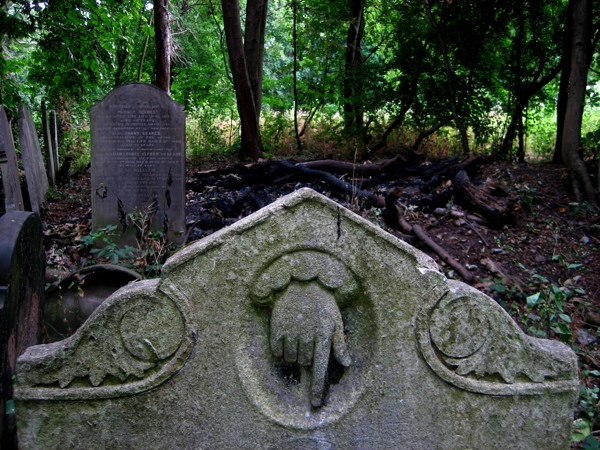
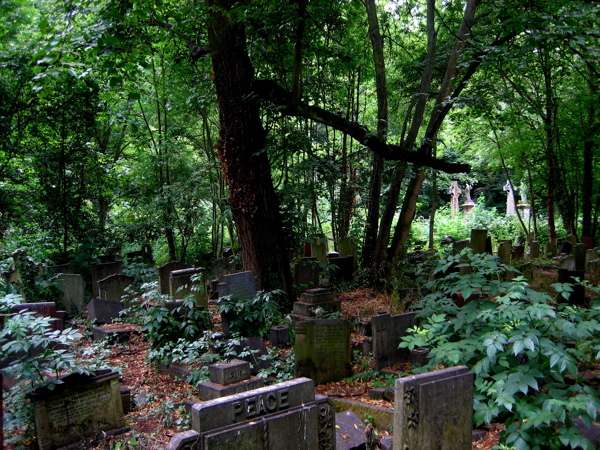

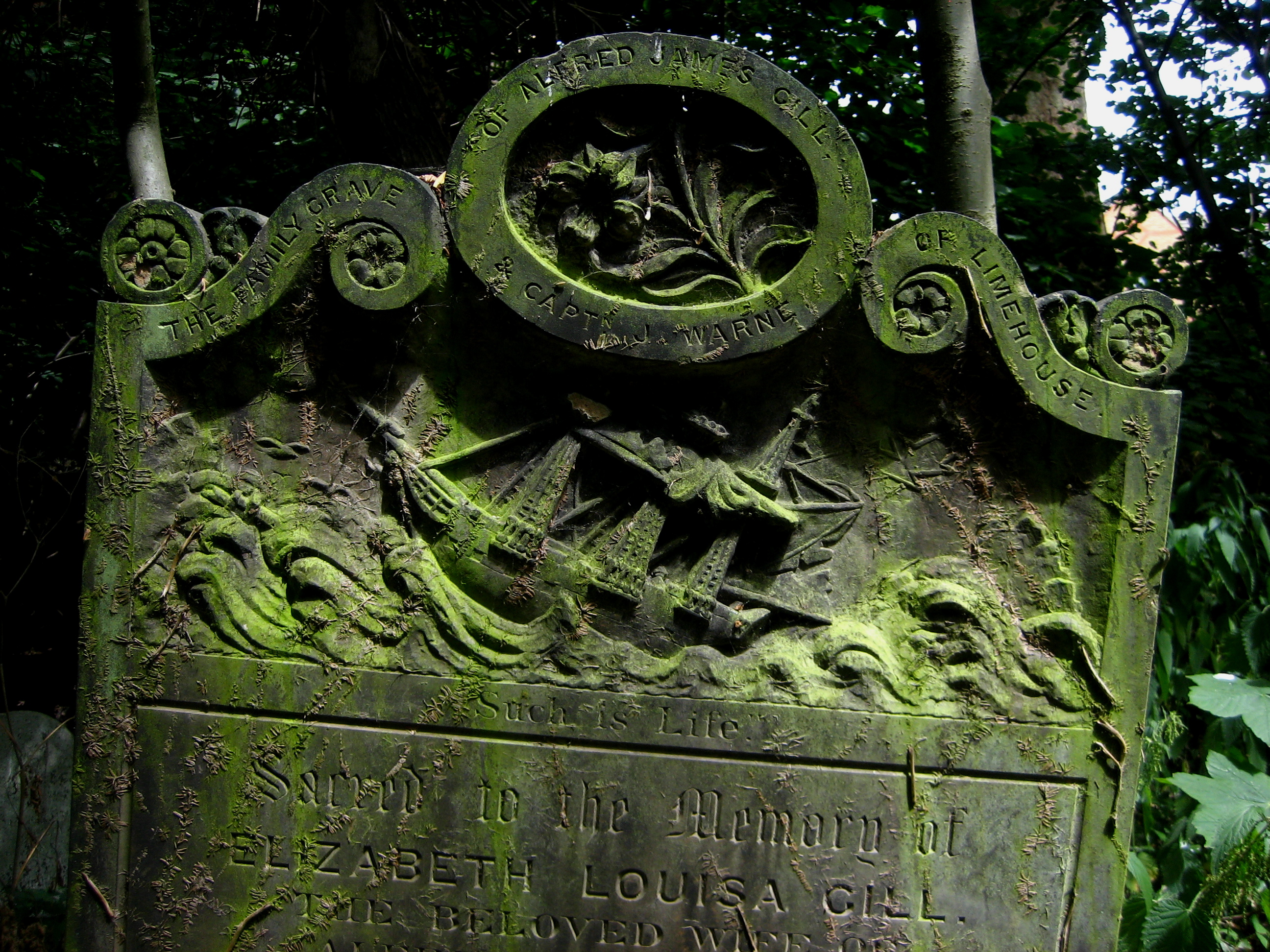

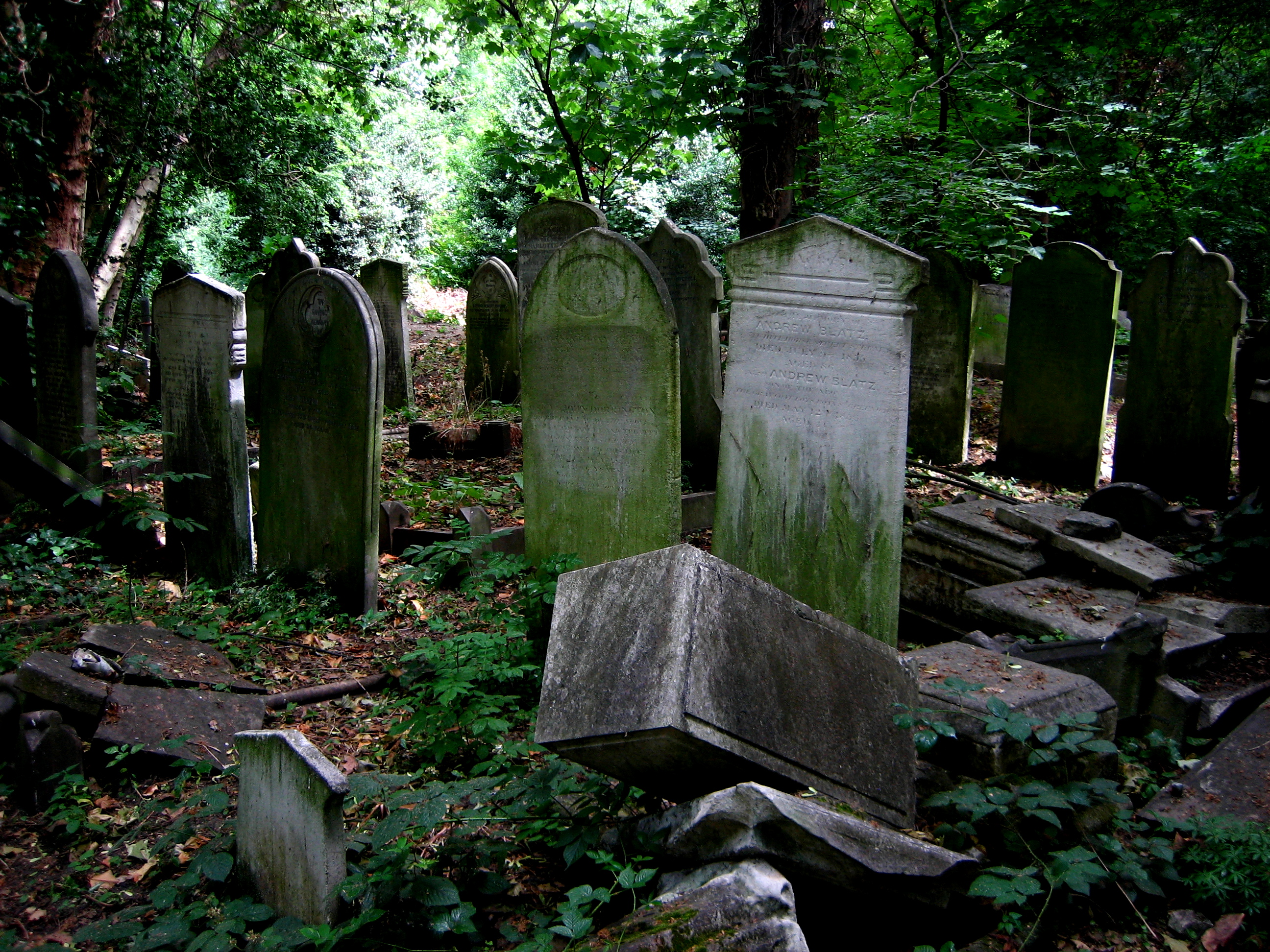
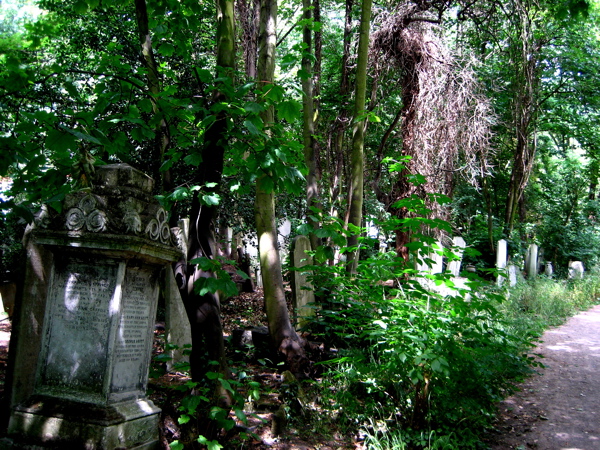
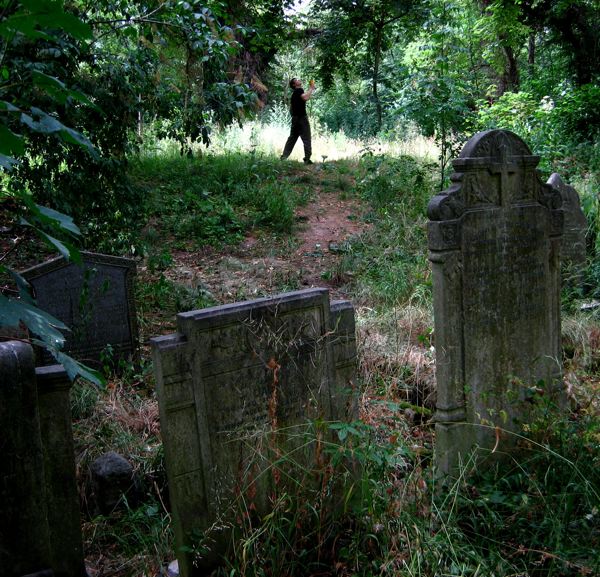
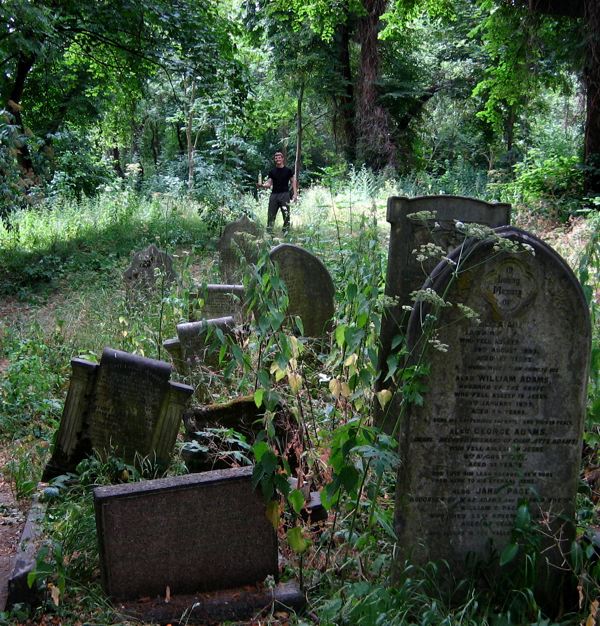
Find out more at www.towerhamletscemetery.org

















A glorious description of a glorious place. Thank you. I have many ancestors who rest here, some in the non-conformist area with unmarked graves & no individual plots (they were poor German immigrants who, as you say, helped build our city), others in so-called ‘millionaire’s row’ – the Germans who were more successful in their ventures as publicans and who built themselves large glamorous memorials. And the ones in between with small plain headstones now entwined by the vegetation but who are not forgotten.
Great pics. Cemeteries and gravestones have always interested me to such a degree that I ended up as a grave digger for a year in the late 1980s.
Wonderful places.
I really love the dark humour of the stone with the beautifully carved ship (wreak?) in heavy seas with the words “such is life” underneath.
The finger pointing down on another stone gives me the chills, tho but!
Apt for the Tories today.
Thanks.
Yes thank you for the evocation of place and histories!
The church yards across the land are a infinite archive for the imagination:
St. Andrews, Greenstead, Essex and its Crusader’s resting place or St. Mary’s, Acton, Cheshire, with its Bloody Field just outside the grave yard, now good Cheshire pasture, where the dead of the Battle of Nantwich (1644) now lie.
“where death once held dominion” — A lyrical and provocative phrase. Thank you for that.
And thanks for these stirring atmospheric photos. I felt like I was walking between the various
headstones, the greenery up to my thighs, leaves brushing against my fingertips. The grave stone with the wave-tossed ship totally captivated me and I sat for quite a long time just staring at it. The veil of green velvet moss was the crowning touch to this glorious artifact.
We have several small family cemeteries in our rural town in the Hudson River Valley, and I’ve paid visits to these secret wooded locations (along with our town historian, who is ever-knowledgeable about who/what/when). The stones are mostly tossed, laid aside, tilted, and
engulfed in dense overgrowth. I enjoy observing the motifs included in the carvings — watchful cherubs, stalwart urns, etc. One notable small cemetery has been restored and is lovely and tended — but the beauty of the other wild plots is undeniable.
What a lovely article. When I next visit London will endeavour to visit this lovely place with so much history.
Sixty four years ago on a bright June day, I walked up Southern Grove behind a horse-drawn hearse carrying my grandmother’s body to her final resting place in Bow Cemetery. A day I vividly remember as it was the first funeral I had ever attended. Last year, I returned to the cemetery, but despite knowing the section where she had been buried, I was unable to find her tombstone as nature had taken full possession of the area–as nature so often does. I did linger there for some time, walking the paths, sitting quietly on benches, and stepping in and around some of the sections, being careful to show respect for the living (nature) and the dead. So pleased that the resting place of so many hardworking people who had so little access to nature in their lifetime are finally surrounded by tranquility.